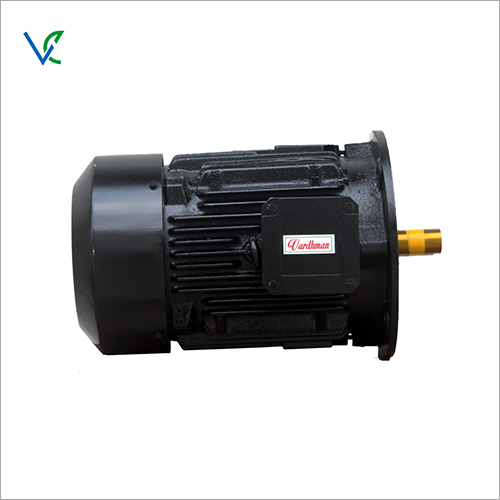
Three Phase Flange Mounted Motor
Product Details:
Product Description
The following are some essential qualities and traits of a three-phase flange-mounted motor:
1. Phase A, phase B, and phase C are the three conductors that make up a three-phase AC power supply, which is what flange-mounted motors are designed to run on. Compared to single-phase motors, this power supply offers a more effective and balanced distribution of power.
2. Mounting with a Flange: The motor's housing has a flange that makes it simple and secure to attach it to a surface or piece of equipment with bolts. The flange promotes stability and the motor's accurate alignment.
3. Performance and Power: Three-phase flange-mounted motors come in a variety of power ratings, often ranging from a few horsepower to several hundred horsepower. Because of their great performance, dependability, and efficiency, they are appropriate for demanding industrial applications.
4. Flange-mounted motors are made of a stator (a stationary component) and a rotor (a revolving component). A laminated core with three sets of windings, one for each phase, make up the stator. The rotor is often made of conductor coils or bars and is of the squirrel cage kind. When the motor is turned on, the stator generates a rotating magnetic field that induces a current in the rotor and causes it to rotate.
5. Cooling and Protection: To dissipate heat produced during operation, flange-mounted motors are frequently built with cooling features such cooling fins, exterior cooling fans, or internal cooling systems. For increased safety and endurance, they could additionally have built-in protection measures including thermal overload prevention, bearing temperature sensors, and insulation monitoring systems.
6. Control and Operation: Direct-on-line (DOL), star-delta, and variable frequency drives (VFDs) are some of the ways that can be used to control three-phase flange-mounted motors. Depending on the demands of the particular application, these control methods enable the starting, halting, and speed control of the motor.
The required power rating, speed, voltage, motor protection features, ambient conditions, and compatibility with the application's mechanical requirements are all things to take into account when choosing a three-phase flange-mounted motor.
Due to their dependability, efficiency, and adaptability, three-phase flange-mounted motors are generally utilised in industrial applications. They offer a strong and dependable method for moving different kinds of machinery and equipment across many different sectors.
FAQ
1. A three-phase flange mounted motor is what, exactly?
Ans - An electrically driven motor with three wire coils installed on a flange that is attached to a shaft is known as a three phase flange mounted motor. This kind of motor has the benefit of being able to generate more torque than a comparable single-phase motor, which makes it a common choice for industrial and commercial applications.
2. What distinguishes a single phase motor from a three phase flange mounted motor?
Ans - A three phase flange mounted motor is attached to a shaft and contains three coils of wire arranged in a triangle. Compared to a single phase motor, this generates more torque. The torque produced by a single phase motor is lower than that of a three phase motor since it just has one coil of wire and is not coupled to a shaft.
3. What is the power source connection for three phase flange mounted motors?
Ans - A three phase power source, such as a power distribution panel, must be linked to a three phase flange mounted motor. Three wiring terminals on the motor are connected to the power source's three phases.
4. What advantages can three phase flange mounted motors offer?
Ans - Due to their ability to generate more torque at a lower voltage than single phase motors, three phase flange mounted motors are often more efficient. They can operate at faster speeds than single phase motors and are more dependable than single phase motors.
5. What disadvantages come with employing a three-phase flange mounted motor?
Ans - A three phase flange mounted motor's primary drawback is that it needs a three phase power source, which can be more expensive to install and maintain than a single phase power source. Three phase motors are also trickier to troubleshoot than single phase motors since they are more complicated.








